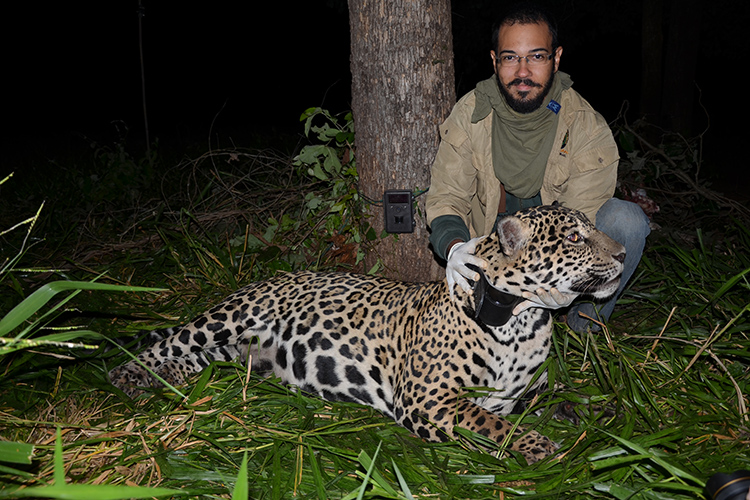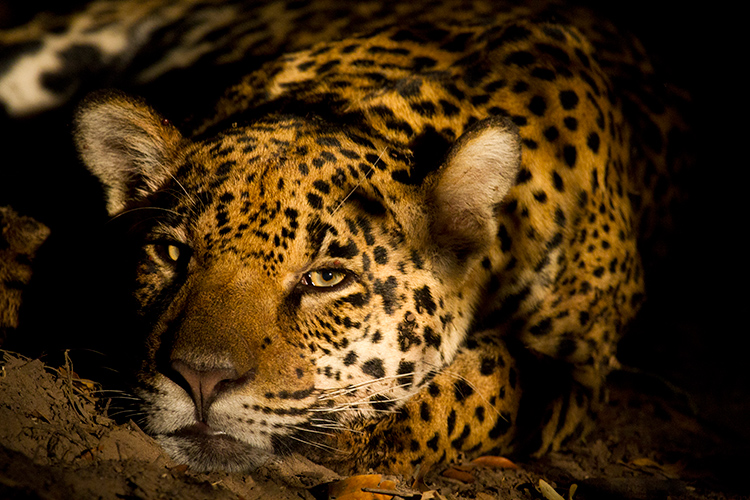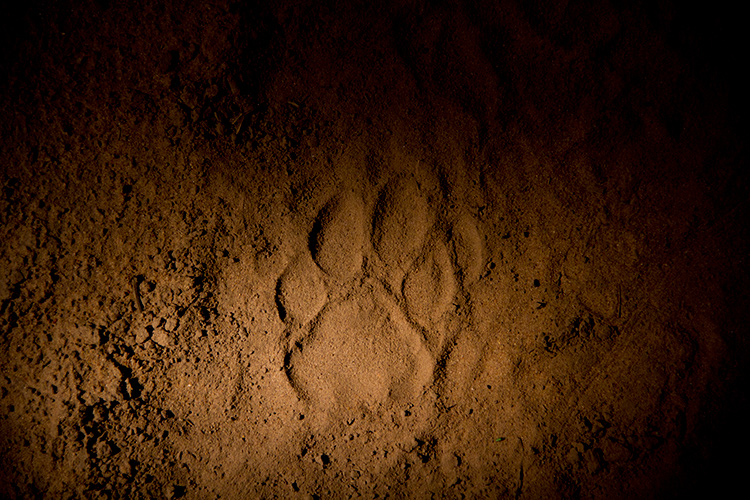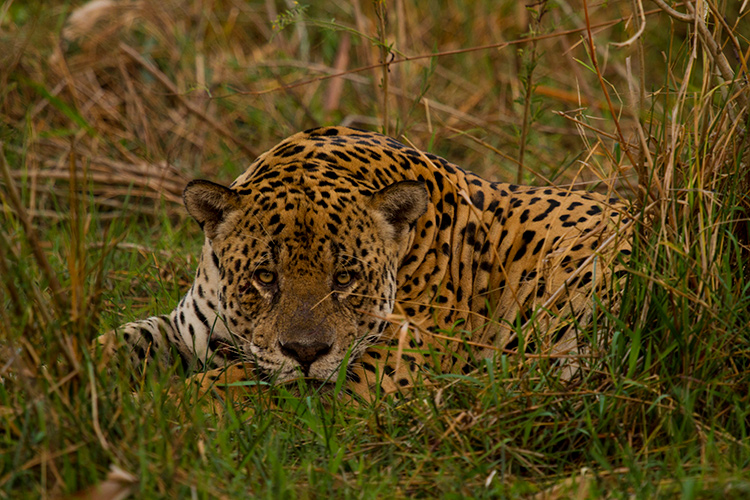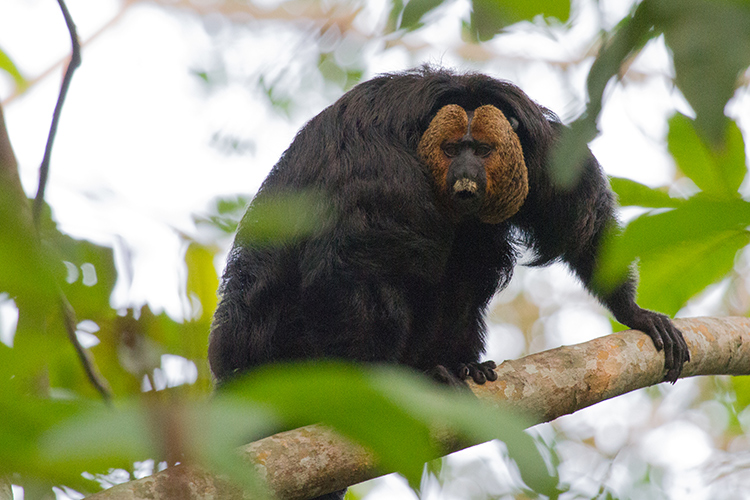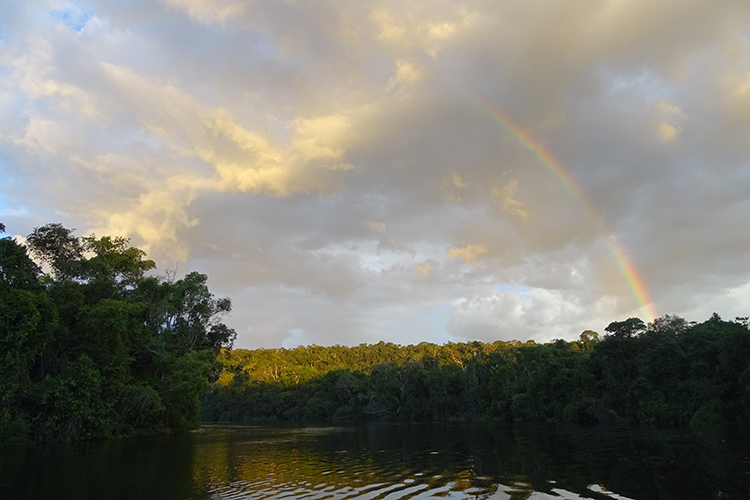Field Leader Spotlight: Meet Diogo Lucatelli
Posted by Carmin Arnot
in Of Interest
Diogo Lucatelli, is our expert field leader on expeditions to the Amazon and Pantanal wetlands. His love for Brazil’s environment and wildlife are evident in the way he shares insights and experiences with guests. Apex Expeditions president, Carmin Arnot, shares this recent interview with Diogo, so you can get to know this remarkable individual. Meet field leader Diogo Lucatelli…
Q: When did you realize your calling to become a wildlife biologist and naturalist guide?
Diogo — Nature’s beauty, ecology and the diversity of life were always a major interest. Choosing Biology as my degree wasn’t hard at all; it was just natural. After I got my bachelor’s degree in Ecology and Natural Resources, I took a seasonal job at a small lodge in the southern Pantanal as a sort of sabbatical. Little did I know that I’d develop a passion for the Pantanal and would make this my home for six years. With time, the notion of being a guide/expedition leader appealed to me. I wanted to inspire, educate and connect people with the natural world. I can’t really think of ever stopping.
Q: What has been the most fascinating wildlife encounter you can remember?
Diogo — I walked regularly through the game trails in southern Pantanal during my time as a guide at Caiman Ecological Refuge. As a tracker working on the Onçafari Jaguar Project, I was constantly in the field looking for Jaguars, which led me to have my share of encounters with these magnificent cats. At Caiman, the rate of Ocelot sightings was very high too. It is expected that wherever you have a lot of Jaguars, you generally have Ocelots too. But Pumas, on the other hand, you would see much less. So, for these six years in the Pantanal, my time in the field could only produce a handful of meetings with Pumas, always quick encounters, crossing a road or a trail. This beautiful, elegant cat became a mysterious character in my mind.
I was mapping a new possible road for game drives at Caiman when my attention was caught by an alarmed group of Plush-crested Jays. I was attracted by the possibility of seeing one of its predators, from snakes and hawks to Jaguars. Swiftly, I walked towards the sounds, careful to make sure that whatever it was, I’d see it before it saw me. As I came within 40 feet of the birds, I couldn’t see any predator, only that the Plush-crested Jays were very low, indicating that the predator was terrestrial. As I couldn’t visualize it, I assumed it was a snake. But as I repositioned to a better angle, the reason for all the noise came into view from behind a palm tree. At 40 feet from me, elegantly sitting in a sphinx position, was a beautiful young Puma female.
Distracted by the loud chorus of jays, the cat was surprised by me and just curiously looked back, studying me. There was a short moment of discovery during which we stared at each other, which probably lasted seconds, but truly felt like a long time. I realized I had my camera in my hands, so I still had a chance to photograph the cat before the clicking noise of my Canon made it calmly stand and walk away. It wasn’t a special moment just because it was an unexpected and rare encounter. The fact that I was alone, followed my instincts, and eventually had an intimate moment with a Puma, made me jump and dance in happiness.
Q: What is one of Brazil’s best kept secrets that you enjoy sharing with Apex travelers?
Diogo — In terms of wildlife in Brazil, the Amazon holds the imagination of any visitor. The Pantanal, with its Jaguars, Giant otters, Anteaters and Hyacinth Macaws, is becoming more and more known to adventure travelers. Nature enthusiasts always come with something in mind to see. What they don’t know about the country, is that our culture goes way beyond the carnival, beach, coconut water and samba cliché surrounding Brazil’s image. Unveiling Brazil’s culture and people in these wild places is always a pleasure to me and a sure jewel in any trip.
Q: What conservation efforts are you most passionate about?
Diogo — As a conservationist, I feel a sense of pleasure and pride, whenever I take travelers into wild places. From conservation units like parks and preserves to private areas that are diligently protected by their owners, any patch of wilderness can benefit from an organized and respectful ecotourism operation. My experience has shown me that for conservation to be successful, it has to include people in the equation, and ecotourism is one of the ways to do such a thing.
In Brazil, the parks and reserves that are not open to visitation are not being properly protected, monitored and researched. They are extremely susceptible to being deforested, polluted and poached. But when you put a community of people that wants the land to be protected inside the equation, the whole thing changes.
The Mamirauá Sustainable Development Reserve, a 3 million-acre area of várzea floodable forest in the Amazon, is managed and protected by the local community which runs the Uakari Lodge. The Caiman Lodge, privately owns and runs a 130,000-acre wild area of the Pantanal in which cattle and wildlife coexist, including the highest densities of jaguars in the world. The Cristalino Lodge, situated inside a 30,000-acre private preserve, protects a hotspot area right on the border of the Brazilian Amazon’s arc of deforestation. In each of these places, a community of people caring and working for conservation was formed, economically sustained by passionate people around the world who endure thousands of miles of travel to visit these sacred places. You have a scenario in which nature is generating income, jobs, and the society’s awareness and will to preserve. Everybody wins.
Q: What is an interesting fact about the Pantanal wetlands that most people don’t know?
Diogo — I enjoy seeing the surprise in people’s faces when I tell them about the snails in the Pantanal. These small, slimy amazing creatures—unimpressive for most, tasty for some—have a more than central role in the Pantanal’s ecology. Their reproduction explodes with the beginning of the rainy season, and this massive population eats the dead, submerged grasslands and all sorts of plant material. The snails themselves become a feast for their predators—Pantanal’s 10 million caimans, hawks, kites, storks, egrets and many others—serving the ecosystem as a major input of nutrients which otherwise would be out of reach for the food chain. We wouldn’t have the highest Jaguar densities in the world in the Pantanal if it weren’t for these tiny mollusks.
Q: Tell us more about your special tracking-skills training and how you use those skills on an Apex expedition?
Diogo — In 2012, still at my first year as a guide at Caiman Lodge, I would use any free time I had to volunteer for the Onçafari Jaguar Project. When they opened a spot for a tracker, I quickly applied. I was curious about tracking and how it has been with us since the dawn of humankind. I went through special training for three months, waking up at 5 am and walking until noon, looking for and then following tracks, trying to think like a Jaguar. This was one of the best things I’ve ever done in my life.
Tracking in the Pantanal is a challenge, I came to learn. The floods, the dense vegetation, thick forest, tall grasslands, and the lack of a large web of roads were obstacles enough. But what made it even harder was the Jaguar itself. It has a large home range in the Pantanal, sometimes reaching more than 40 square miles, with substantial daily movements. Plus, being highly elusive and secretive, tracking and finding a Jaguar is a hard task.
There is much more about tracking than just finding the animal. It becomes an addiction very easily as you lose yourself trying to get into the animal’s mind, and accessing ancient forgotten corners of our own mind. For guiding, this can be an invaluable skill. By actively following an animal’s steps, constantly hypothesizing about its behaviors, movement patterns, and relating it to the environment, you achieve notions about the animal’s natural history you wouldn’t otherwise. Now, my tracking skills are most useful to unveil stories written in the sand by paws and hooves, always enriching my guests’ experience. And every once in a while, whenever the opportunity presents, we might see a pair of curious ears and a flipping tail.
Q: What sparked your interest in wildlife photography?
Diogo — When I started working as a naturalist guide I was a sort of a purist, not really seeing all the commotion about photography. “I didn’t come all this way to see wildlife through the lens of a camera,” I used to think. For whatever reason, I borrowed a friend’s Canon DSLR with a 300mm lens for a few days to take shots of birds. Oh boy, not too long after that, I bought a Canon 7D and a 100-400mm lens. This was in 2012 and this warrior is still shooting wildlife with me. Wildlife photography became first a means to make useful records of my experiences in nature, helping me to learn, check IDs, and most importantly to remember and share such special memories. Eventually, though, it became a matter of how to picture a scene in order to record not just details and beauty, but also to tell the story behind the shot and share it with family and friends. That’s the ultimate value of photography after all, isn’t it?
Q: What is one thing that you hope Apex travelers will take away from their time spent traveling with you in Brazil?
Diogo — Being in nature, living adventures while exploring wild places, along with passionate people from all around the world, with whom lifelong friendships are formed… for me, that is an experience full of meaning. It is about creating a connection with the natural world, taking great memories home, seizing my time in this world, and learning more about life each time. I guess what I feel and take from each trip is exactly what I hope every Apex traveler gets out of the experience… and not an ounce less!
Learn More
Learn more about field leader Diogo Lucatelli and his upcoming expeditions.

